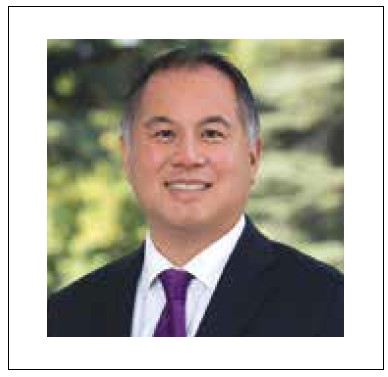
By Assemblymember Phil Ting–
California is at the forefront of the climate crisis. It’s evident, as we watch Lake Tahoe and other areas being evacuated due to yet another year of record setting fires, wake up to orange skies, and see photo after photo of empty reservoirs. We’ve experienced droughts, floods, wildfires, and extreme heatwaves all in the last few years—with no end in sight unless we take bold action today.
It has never been more urgent to step up our game and pursue meaningful steps against climate change, so our children and generations after can continue to enjoy our beautiful state. Fortunately, our historic budget surplus allows us the opportunity to pursue more aggressive measures aimed at the crisis unfolding before us.
California recently put a $3.7 billion down payment on responding and adapting to climate change, while also building climate resilience to better cope with our risks. The three-year package includes $611 million to address sea level rise and protect our shorelines. Some of that funding will go toward the San Francisco Bay for flood protection, bayside access, and wetlands preservation. This investment is crucial because the San Francisco Bay contains 77 percent of the state’s remaining wetlands and 1,000 species of animals. All of that is threatened, according to the U.S. Geological Service, because two-thirds of the socioeconomic impacts of sea level rise are expected to be experienced in the Bay Area.
As chair of the Assembly Budget Committee, I made sure we prioritized the protection and preservation of the San Francisco Bay and worked closely with Assemblymember Kevin Mullin, who championed this issue through his years of work crafting an environmental protection bond. We were able to largely fund the environmental bond through our budget surplus.
In addition, about one-third, or $1.3 billion, of the climate resilience funding will help preserve open space and wildlands, as well as provide for habitat restoration. This includes protecting fish during drought conditions and building wildlife crossings. Furthermore, this allocation helps us with the implementation of the state’s goal to conserve 30 percent of lands and coastal waters by 2030.
Equally important is combatting rising temperatures. $800 million will go toward defending against extreme heat, such as planting trees in urban areas for more shade, improving energy efficiency of low-income multifamily housing, and building community resiliency centers, which ensure that Californians have a place to go to avoid extreme heat, wildfire smoke, power outages, or any other climate challenge—regardless of their income level.
Lastly, the climate budget uses just over $900 million for regional planning and adaptation projects. The Bay Area has led on developing regional climate plans, and because climate change doesn’t stop at the city border, such cooperation should serve as a model to facilitate collaboration on our shared challenges. These efforts can map out climate impacts and forecasts, engage in environmental justice work, and develop a Climate Action Corps of volunteers. The bulk of this funding goes toward the Transformative Climate Communities program to ensure communitywide investment provides local economic, environmental, and public health benefits to our lowest income neighborhoods.
To complement the $3.7 billion climate resilience package, California also devoted:
I’m extremely proud of our bold plan to protect California’s environment, cut down on greenhouse gases, and improve air quality. This was truly a historic budget, but the state’s policymakers from city council to Congress must also continue to fight to reduce emissions and slow catastrophic climate change. California cannot do it alone.
Phil Ting represents the 19th Assembly District, which includes the Westside of San Francisco along with the communities of Broadmoor, Colma, and Daly City.
Recent Comments